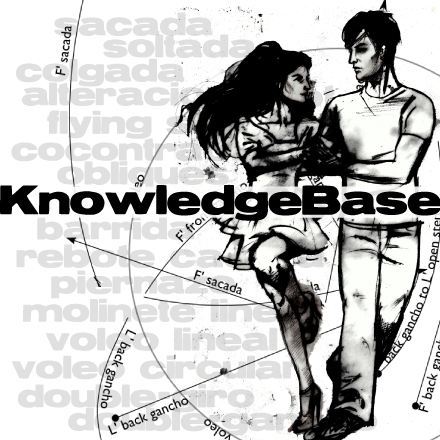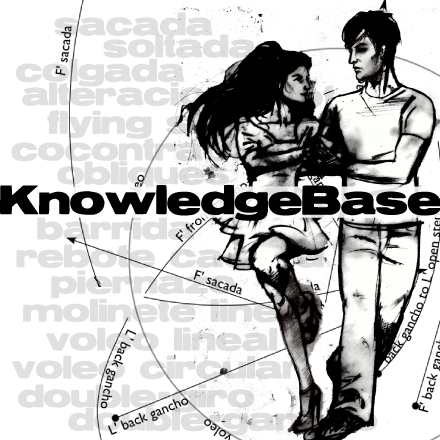Dancing, we move and communicate in both horizontal and vertical dimensions.
The horizontal plane is the floor, on which we paint lines (by walking in different ways), circles (giros), and intersections (sacadas).
We also move in the vertical plane.
- The most fundamental vertical movement is flexion and extension of the knee joint, through which we create larger and smaller steps.
- We use co-contraction to send the revel’s leg up into the air to create beautiful arcs away from, around, and through the mark’s body. We can create straight voleo lineal or spiral voleo-circular, combining pivot with a little or a lot of extra power from the co-contraction.
Uses of vertical circles
- We use the vertical plane to amplify the dynamics of connection. The most dramatic use of the vertical plane are leaning movements, volcada and colgada and flying step. Vertical circles are one way to initiate these movements.
- We also use vertical circles to give extra drama and power to steps. This is not used in every step, but to initiate an especially powerful line of motion. In this case the Mark circle the elbows to give permission to lean, but instead of then creating a volcada or colgada, we use the weight to amplify the forces of the arch of connection to create a more powerful step.
- Circle moves up and away from the Mark: Intensifies the pull connection into a Revel’s front step.
- Circle moves up and toward the Mark: Intensifies the push connection into a Revel’s back step.

- Vertical circles can be used to trick baby-beginner Revels into an arch-like connection. But no one should use this method routinely for dancing with a beginner, as she will never learn to control her own body. It’s only to entertain a completely new dancer for her first time on the dance floor or in a milonga situation where you can’t talk to her. Vertical circles can also be used by marks when dancing with revels who simply will not take a large enough step to move in the line of dance, or who cannot step front at all. Again, this method is counterproductive to the revel’s learning process, but it can get you through a tanda.











